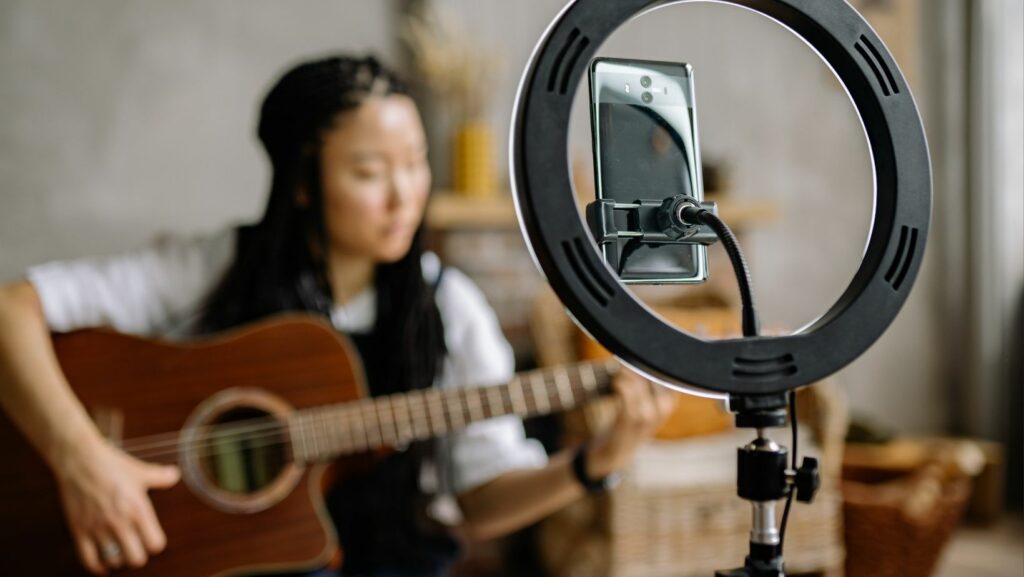Streaming Classical Music
- Revolutionized Access: Streaming classical music enhances accessibility, allowing a diverse audience to enjoy extensive libraries of compositions from anywhere at any time.
- Curated Playlists: Platforms provide expertly curated playlists that help listeners discover new favorites and explore specific composers or musical themes.
- Cost-Effective Solutions: Subscriptions to streaming services are generally more affordable than purchasing physical media or concert tickets, making classical music more accessible.
- User-Friendly Experience: Intuitive interfaces on streaming platforms enable easy navigation through vast catalogs, enhancing the overall listening experience.
- Audio Quality Concerns: While streaming offers convenience, challenges related to audio quality persist, as compressed files may lack the richness needed for classical compositions.
- Algorithm Limitations: Streaming platforms can create filter bubbles through their recommendation algorithms, potentially limiting exposure to diverse and lesser-known classical works.
In a world where music is just a click away, streaming classical music has emerged as a powerful way to connect with timeless masterpieces. With the rise of digital platforms, classical enthusiasts and newcomers alike can explore vast libraries filled with symphonies, concertos, and chamber works from renowned composers. This accessibility transforms how people experience classical music, breaking down barriers and inviting a diverse audience to appreciate its beauty.
As technology evolves, so does the landscape of music consumption. Streaming services offer curated playlists, expert recommendations, and even live performances, making it easier than ever to dive into the rich tapestry of classical music. Whether it’s a soothing solo piano piece or an exhilarating orchestral performance, the world of streaming classical music opens doors to an auditory journey that captivates the heart and mind.
Overview Of Streaming Classical Music
Streaming classical music revolutionizes access to this genre, expanding its reach to a broader audience. Digital platforms offer extensive collections of orchestral works, chamber music, and operatic performances, catering to both classical enthusiasts and casual listeners alike.
Streaming services provide significant advantages:
- Diverse Catalogs: Services like Spotify, Apple Music, and specialized platforms such as Classical Archives host millions of compositions, including rare recordings and live concert footage.
- Curated Playlists: Many platforms feature playlists curated by music experts, showcasing composers, themes, or specific periods, aiding listeners in discovering new favorites.
- On-Demand Access: Listeners can enjoy classical music anytime, eliminating the constraints of physical media and traditional radio schedules.
- User-Friendly Interfaces: Intuitive navigation allows users to search by composer, work, or instrument, enhancing the overall experience.
- Personalized Recommendations: Algorithms analyze listening habits, suggesting performances that align with individual preferences.
These elements combined promote an environment where classical music thrives, inviting new generations to appreciate its richness and complexity. Streaming services also foster a global community of listeners, connecting them through shared musical experiences and educational resources.
Benefits Of Streaming Classical Music
Streaming classical music offers significant advantages that enhance the listening experience and broaden accessibility. These benefits include convenience, cost-effectiveness, and a more engaging way to explore the genre.
Accessibility And Convenience
 Streaming services provide immediate access to vast libraries of classical music. Users can listen to millions of compositions without geographic limitations. Major platforms allow for streaming on various devices, including smartphones and tablets, enabling music access anytime and anywhere. Curated playlists simplify the discovery of new works, while user-friendly interfaces facilitate easy navigation through extensive catalogs. The option to enjoy live performances and recordings not only enriches the experience but also connects audiences to events worldwide.
Streaming services provide immediate access to vast libraries of classical music. Users can listen to millions of compositions without geographic limitations. Major platforms allow for streaming on various devices, including smartphones and tablets, enabling music access anytime and anywhere. Curated playlists simplify the discovery of new works, while user-friendly interfaces facilitate easy navigation through extensive catalogs. The option to enjoy live performances and recordings not only enriches the experience but also connects audiences to events worldwide.
Cost-Effectiveness
Streaming classical music significantly reduces the financial barriers associated with music consumption. Subscriptions to streaming platforms often cost less than purchasing individual CDs or concert tickets. Many services offer free tiers, allowing users to enjoy classical music without any upfront investment. Additionally, libraries on these platforms showcase both popular and lesser-known compositions, exposing listeners to a diverse range of music without additional costs. This cost-effective model encourages exploration and discovery, fostering a deeper appreciation of the genre.
Popular Streaming Platforms
Several streaming platforms stand out for their extensive libraries and user-friendly experiences tailored for classical music enthusiasts. These services enable diverse audiences to explore the genre easily.
Spotify
Spotify hosts a vast collection of classical music recordings, including symphonies, sonatas, and operas. It offers curated playlists like “”Classical Essentials”” and user-generated options that cater to various tastes. Users benefit from features like personalized recommendations based on listening habits. With its robust algorithm, Spotify effectively introduces listeners to new composers and performances, enhancing their musical journey through its collaborative features.
Apple Music
Apple Music provides an extensive library of classical music for its subscribers. Its offerings include exclusive content from renowned orchestras and artists. Users can access meticulously curated playlists designed by experts in classical music. Apple Music also features immersive listening experiences through Spatial Audio, elevating the enjoyment of symphonic performances. With seamless integration across Apple devices, it ensures easy access to favorite tracks.
YouTube Music
YouTube Music is a unique platform that combines audio and visual elements for classical music lovers. It features official music videos, live performances, and user-generated content, such as interpretations and discussions. Playlists for different moods and occasions enhance the discovery process. The ability to follow favorite artists and orchestras allows users to stay updated on recent releases. YouTube Music’s diverse content offers a comprehensive exploration of classical music beyond traditional audio streaming.
Challenges In Streaming Classical Music
Streaming classical music faces specific challenges that affect both audio quality and user experience. Addressing these hurdles ensures an enriched listening environment for enthusiasts and newcomers alike.
Quality Of Audio
 Audio quality presents a significant challenge in streaming classical music. Classical compositions often contain intricate details, dynamic ranges, and subtle nuances essential for a fulfilling experience. Many streaming services compress audio files to minimize data usage, which can detract from the richness of orchestral performances. High-resolution streaming options exist, yet they typically require reliable internet connections and may incur additional costs. Classical music aficionados often prioritize sound fidelity, leading to dissatisfaction with lower-quality streams that fail to capture the full depth of compositions. Achieving the balance between accessibility and superior audio quality remains a key concern within the classical music streaming landscape.
Audio quality presents a significant challenge in streaming classical music. Classical compositions often contain intricate details, dynamic ranges, and subtle nuances essential for a fulfilling experience. Many streaming services compress audio files to minimize data usage, which can detract from the richness of orchestral performances. High-resolution streaming options exist, yet they typically require reliable internet connections and may incur additional costs. Classical music aficionados often prioritize sound fidelity, leading to dissatisfaction with lower-quality streams that fail to capture the full depth of compositions. Achieving the balance between accessibility and superior audio quality remains a key concern within the classical music streaming landscape.
The Algorithm Dilemma
The algorithm dilemma affects how listeners discover new classical music. Algorithms prioritize user preferences based on previous listening habits, often leading to repetitive suggestions that mirror past choices. This limitation reduces exposure to diverse composers and lesser-known works, ultimately hindering exploration within the genre. Classical music’s vast repertoire includes a multitude of styles and periods, from Baroque to contemporary, which algorithms may overlook. Resulting filter bubbles can restrict listener experiences, preventing the discovery of niche works and emerging artists. Addressing this dilemma requires streaming platforms to refine their algorithms, incorporating a broader range of music while encouraging users to explore beyond their established tastes.
Streaming Classical Music Has Transformed How Audiences Engage With This Timeless Genre
Streaming classical music has transformed how audiences engage with this timeless genre. With unprecedented access to vast libraries and curated playlists, listeners can explore a world of symphonies and concertos at their fingertips. The convenience and cost-effectiveness of these platforms make classical music more accessible than ever before.
While challenges like audio quality and algorithm limitations persist, the potential for discovery remains immense. As streaming services continue to evolve, they have the opportunity to refine user experiences and foster a deeper appreciation for classical compositions. Ultimately, the rise of streaming classical music is not just about convenience; it’s about connecting a global community through the shared joy of music.



